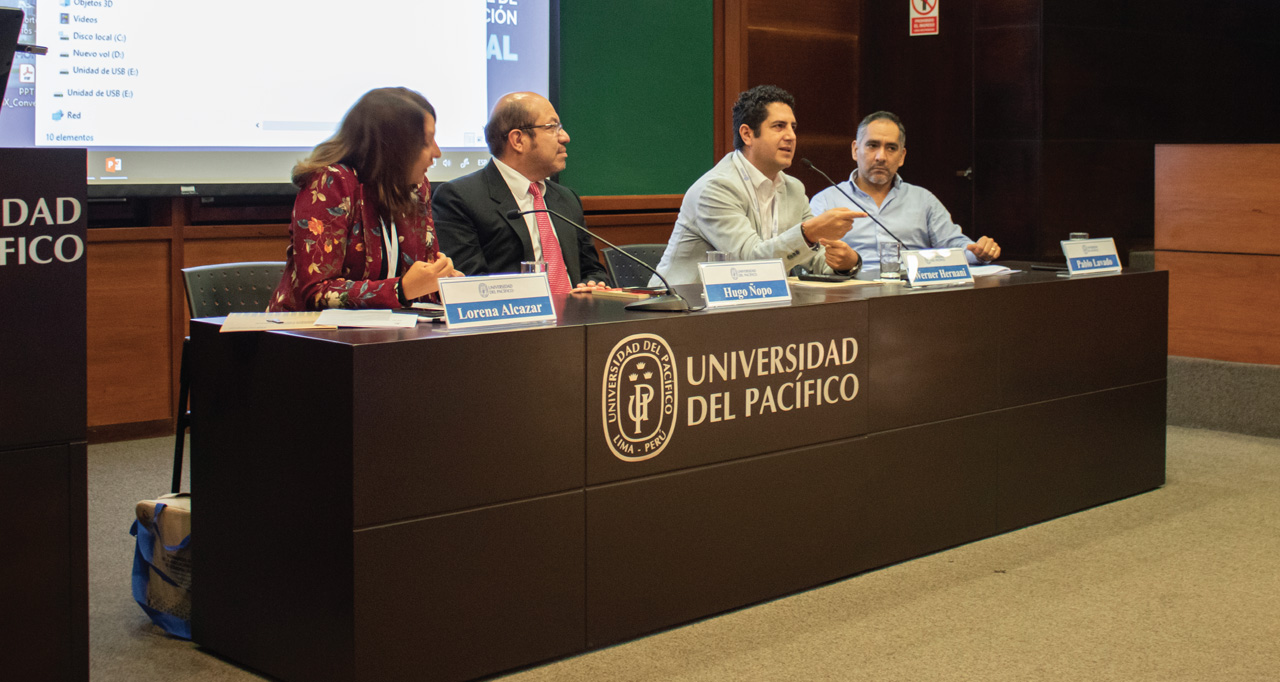Synergies between education and employment are vital in social policy. However, there is still little information on how the quantity and quality of primary school affect employment conditions, in particular with the population that is left behind.
On the sidelines of the 2019 annual congress of the Peruvian Association of Economics (APE), Southern Voice hosted a panel. The topic was the precariousness of education and employment in Peru and Bolivia. The presentations were given by Lorena Alcázar from GRADE, Peru, and Werner Hernani from ARU Foundation, Bolivia. They are part of Southern Voice’s “State of the SDGs” initiative. Also, economist Hugo Ñopo shared an analysis of education investment in Peru. The emphasis of the studies is on Sustainable Development Goal (SDG) 4 (Quality of Education) and SDG 8 (Decent Work).
Peruvian youth’s transition into decent jobs is precarious
Although Peru has achieved SDG targets on average, the country is still characterized by heterogeneity and very high inequality. Some examples: only 16% of rural children reach satisfactory reading levels versus 46% on a national average. And four in five young people have an informal job.
“This affects mostly disadvantaged groups, in particular, the excluded youth, women and indigenous people”, said Lorena Alcázar. Research conducted by GRADE shows that the amount of education years has a significant effect on the probability of working precariously. However, when education performance is analyzed, the impact of years of education fades out. Thus, what matters to determine the labour condition of the youth is access to quality education, rather than just access to education.
GRADE’s research also indicates that belonging to a marginalized group is a more significant determinant of being left behind in access to decent jobs than poor education. Being a woman or being indigenous increases the risk of being left behind in access to decent employment by 19%.
Findings also reveal that Peruvian women experience substantial gender-related setbacks. This is the case both in access to quality education and decent work. The study recommends gender-specific programming in schools, as well as a gender focus in vocational programs, together with soft and technological skills.
Schooling does not equal learning in Latin America and the Caribbean.
Research, conducted by ARU Foundation (Bolivia), on the challenges for achieving quality education in the country shows that gains in school attendance have not contributed to poverty and income inequality reductions.
“A reason is that political networks and social connections are now considered more relevant than schooling”, said Werner Hernani. ARU’s findings also point out that schooling does not equal learning in Latin America and the Caribbean. Most children in the region are being left out in terms of access to quality education. Major institutional reforms, in addition to the usual small-targeted interventions, are needed to address the problems of this SDG.
Peru is investing more in education, but it is far from enough
On the question on the link between education and employment, economist Hugo Ñopo shared a World Bank study on the quality of investment in education in Peru. “We have been spending more and better, but we have to be careful with basic infrastructure”, he said. Findings show that between 2009 and 2015, public investment in this area has been falling.
The presentation also highlighted that besides efficiency, Peru’s issue is low investment. Research shows a sub-investing in what should matter most in education: teacher’s wages. According to Ñopo, evidence indicates that what works best in education and has the highest impact on learning improvement, is good teachers.
To learn more about Southern Voice’s “State of the SDGs” initiative, visit its microsite, with interactive material, videos and the six case studies from three continents.


